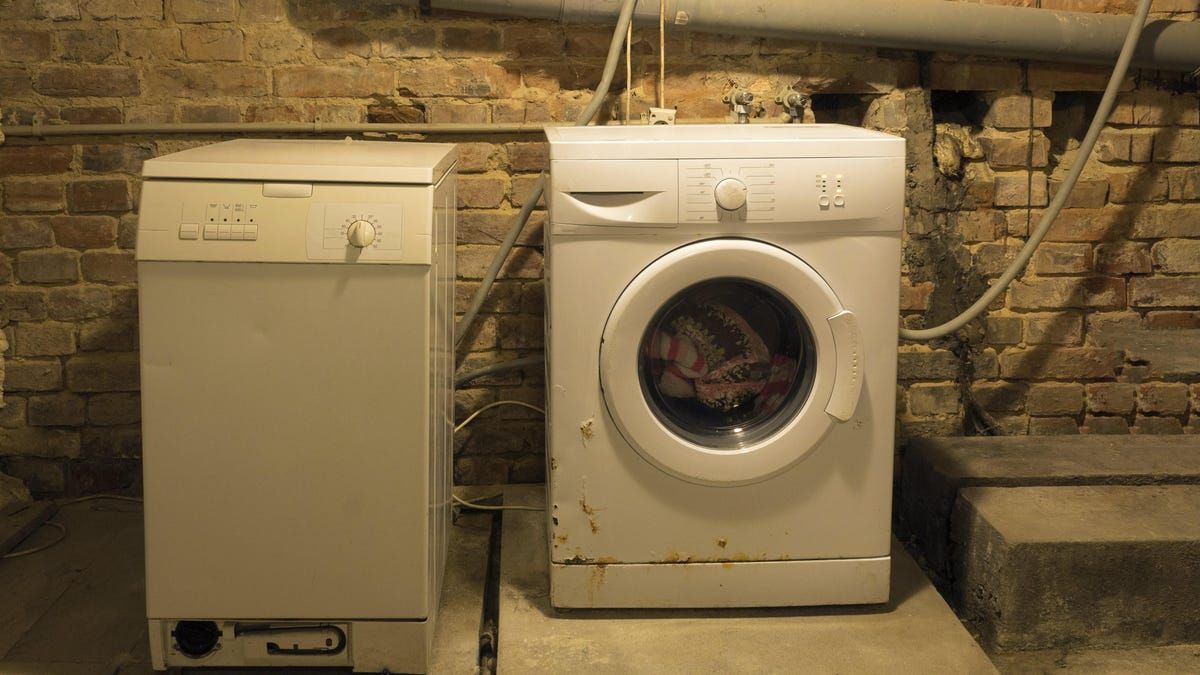Your Basement Laundry Room Can Be Better
After years of being relegated to the basement, laundry rooms have largely moved above ground in homes built over the last 25 or so years.
But if your home was constructed before upstairs laundry rooms were the norm, your washer and dryer are probably in your basement. While that makes sense from a space-saving perspective, damp basement conditions aren’t ideal for doing laundry. Here are a few improvements you can make to your basement laundry room (or area).
The problem with doing laundry in the basement
Yes, it’s inconvenient having to schlep your dirty laundry down the stairs (if you don’t have a chute), and then back up the stairs when it’s clean. But there’s a bigger issue that impacts both your home and your laundry.
“Laundry rooms generally tend to produce quite a bit of humidity and heat, and when you place your laundry room in the basement, moisture has fewer places to disperse,” interior designer Brett Elron told Realtor.com. “This can lead to more cases of mold and rot in your floors and walls.”
Plus, if it’s overly humid and damp in your basement, any laundry you leave down there can end up smelling musty.
How to improve your basement laundry room
Fortunately, there are a few things you can do to improve the conditions in your basement laundry area. Here are some to consider:
Install ventilation and exhaust fans: There are multiple options
There are Open the windows : This isn’t possible in all basements, as many have glass-block windows, but opening windows or doors (as long as there’s a screen door) provides natural ventilation.
: This isn’t possible in all basements, as many have glass-block windows, but opening windows or doors (as long as there’s a screen door) provides natural ventilation. Make sure your dryer is properly ventilated : Not only are unvented dryers a fire safety risk, but they also add a lot of moisture
: Not only are unvented dryers a fire safety risk, but they also Monitor the humidity level : If you don’t already have a way of determining the humidity level in your basement, invest in a small digital room thermometer that also measures humidity (there are plenty of options under $10
: If you don’t already have a way of determining the humidity level in your basement, invest in a small digital room thermometer that also measures humidity (there are plenty of options Get an air purifier : Just be sure it’s one that takes care of mold spores
: Just be sure it’s one that Add some lighting : Basements tend to lack natural light, which can make it hard to spot stains on clothing. A task lamp or clip-on utility light can make a big difference.
: Basements tend to lack natural light, which can make it hard to spot stains on clothing. A task lamp or clip-on utility light can make a big difference. Air-dry laundry upstairs or outside: The lack of sunlight and airflow
What about dehumidifiers?
If the humidity in your basement is over 60%, a dehumidifier can help. That said, a dehumidifier is only a temporary solution, because it doesn’t address the source of the humidity.
In fact, according to the University of Minnesota Extension, they can make things worse: “By drying out the basement air, moisture is drawn into the basement more rapidly causing efflorescence and spalling of concrete and further damage to interior finishes.”
To prevent this from happening, you can program your dehumidifier to maintain an optimal relative humidity level, which is between 30% and 50%, according to the Environmental Protection Agency. If yours doesn’t have that feature, monitor the humidity levels in your basement to ensure it doesn’t get too dry.
Source: Lifehacker


